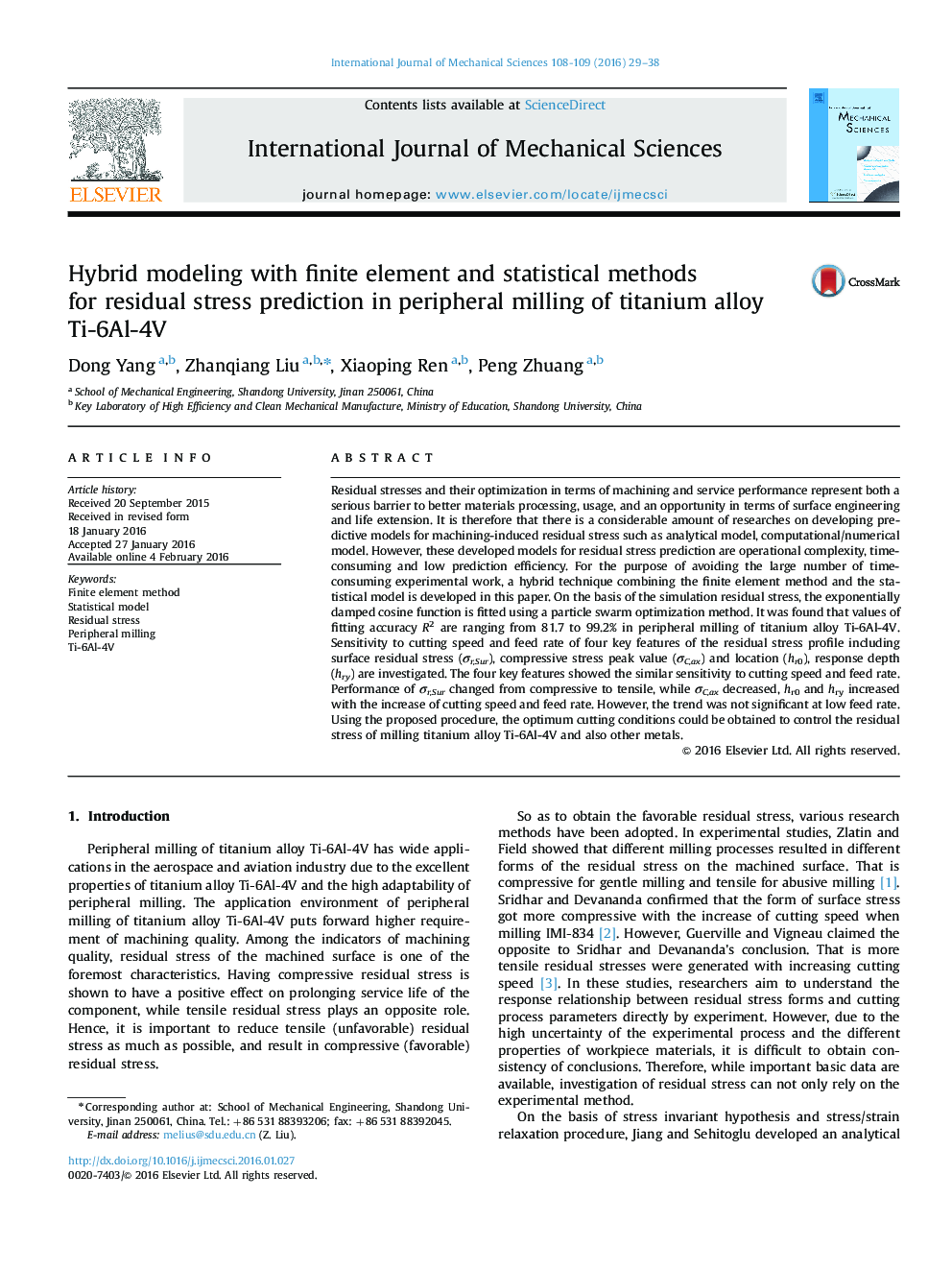| Article ID | Journal | Published Year | Pages | File Type |
|---|---|---|---|---|
| 780021 | International Journal of Mechanical Sciences | 2016 | 10 Pages |
•A hybrid technique combining finite element and statistical methods is developed.•Detailed finite element simulations are carried out.•Residual stress profile is fitted by exponentially damped cosine function.•Features of the residual stress profile are investigated.
Residual stresses and their optimization in terms of machining and service performance represent both a serious barrier to better materials processing, usage, and an opportunity in terms of surface engineering and life extension. It is therefore that there is a considerable amount of researches on developing predictive models for machining-induced residual stress such as analytical model, computational/numerical model. However, these developed models for residual stress prediction are operational complexity, time-consuming and low prediction efficiency. For the purpose of avoiding the large number of time-consuming experimental work, a hybrid technique combining the finite element method and the statistical model is developed in this paper. On the basis of the simulation residual stress, the exponentially damped cosine function is fitted using a particle swarm optimization method. It was found that values of fitting accuracy R2 are ranging from 81.7 to 99.2% in peripheral milling of titanium alloy Ti-6Al-4V. Sensitivity to cutting speed and feed rate of four key features of the residual stress profile including surface residual stress (σr,Sur), compressive stress peak value (σC,ax) and location (hr0), response depth (hry) are investigated. The four key features showed the similar sensitivity to cutting speed and feed rate. Performance of σr,Sur changed from compressive to tensile, while σC,ax decreased, hr0 and hry increased with the increase of cutting speed and feed rate. However, the trend was not significant at low feed rate. Using the proposed procedure, the optimum cutting conditions could be obtained to control the residual stress of milling titanium alloy Ti-6Al-4V and also other metals.
